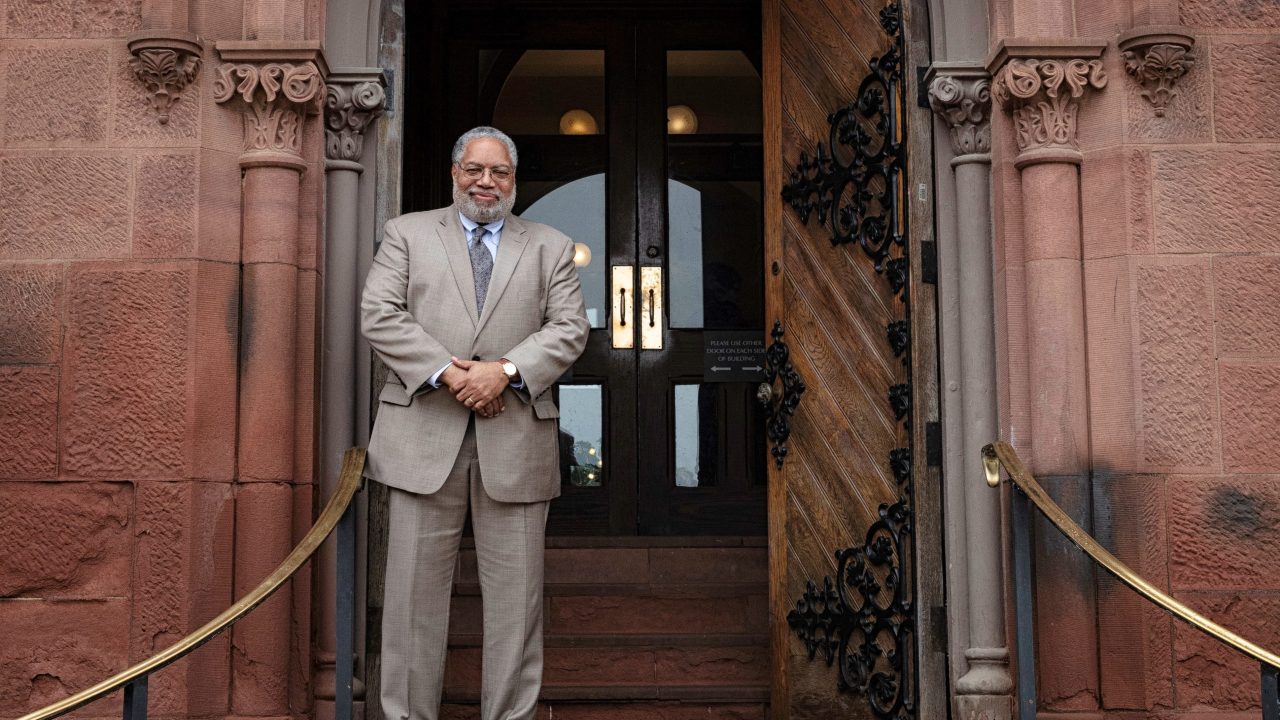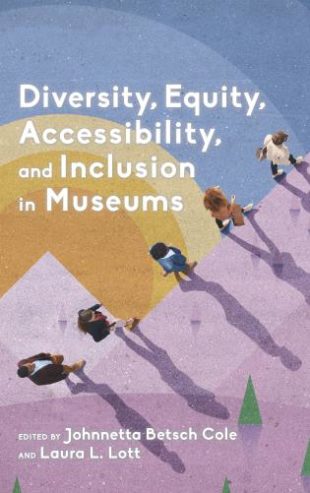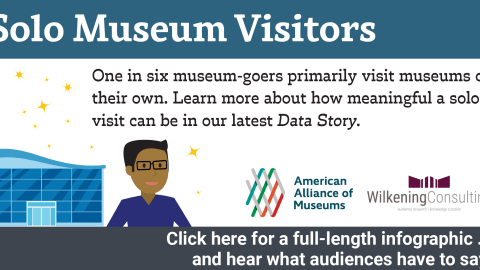
This essay originally appeared in the July/August 2000 issue of Museum News, a publication of the American Alliance of Museums. Lonnie G. Bunch III later became the founding director of the Smithsonian National Museum of African American History & Culture, before being named the fourteenth secretary of the Smithsonian Institution this week.
When I first attended national meetings of museum professionals in the late 1970s, I was struck by how few people of color were present. I remember searching the crowd for the nod of recognition or the acknowledgment and acceptance that comes from a common cultural connection. I knew we would find each other eventually, share effusive greetings, and joke once again about the “joys” of integrating the profession. In a corner of the convention center, or in the rear of the vendors’ marketplace, we would prepare ourselves for the sessions by singing the words of Al Green’s 1971 hit, “I’m so tired of being alone, I’m so tired of being on my own.” Invariably after attending a session, we would reconvene and someone, drawing on his knowledge of southern folklore, would say “There were just a few of us flies in the buttermilk.” Reminding us, though we needed no reminder, that the museum field was awash in whiteness.
When I entered the main hall of the Baltimore Convention Center during the AAM Annual Meeting this May, I was pleased to see a greater sprinkling of diverse attendees. No longer were the numbers so small that we seemed almost invisible. Yet even that pleasure was tempered by the fact that many of the people of color who attended the gathering represented racially or ethnic-specific institutions. While it is crucial that the professional organizations service a more diverse institutional base, the mere presence of more African Americans, Asian Americans, Latinos, or Native peoples at annual meetings does not mean that museums that once called themselves “mainstream” have wrestled effectively and creatively with issues of diversity and staffing. In fact, a visit to almost any museum leaves one startled by just how small the numbers really are. The limited minority presence in the professional ranks of America’s cultural institutions is a sad comment on the museum profession’s inability to create a permanent workforce that reflects the diversity of this nation. It dramatically reveals the great chasm between the profession’s stated ideals and its daily practices and priorities.
No one can deny that the profession espouses the need to explore the issue of diversity. In the past decade, it has been impossible to attend a meeting that has not had a session or a paper that looks at some aspect of cultural diversity. For example, the AAM meeting in Baltimore had 12 sessions that were included in a “Diversity Pathway” and more than 30 panels that examined some aspect of “multiculturalism.” Almost all the recently drafted mission statements of museums promise a greater appreciation of America’s heterogeneity. And publications like Excellence and Equity: Education and the Public Dimension of Museums (AAM, 1992) encourage the profession to embrace diversity. According to Excellence and Equity:
“If museums are to be welcoming places for people of different racial, ethnic, social, economic, and educational backgrounds, and if they are to use their collections to present a variety of perspectives, they must recruit, hire or select, and foster the professional growth of trustees, staff, and volunteers who reflect diverse audiences and multiple perspectives.”
Clearly the rhetoric of change and diversity has echoed throughout the museum profession. And if rhetoric alone could effect change, then our profession would stand transformed. Unfortunately, words are not enough.
Despite more than a decade of conversation, we have failed to address adequately, seriously, and creatively the realities of a less than diverse workforce. In a recent national survey that assessed the financial situation of America’s museums (1999 AAM Museum Financial Information: A Report from the National Survey), one question asked the ethnic or racial background of the top institutional administrator. Only 4.2 percent of museum directors were people of color. Of that percentage, 1 percent were African American, 1.2 percent were American Indian, 0.5 percent were Asian American, 0.2 percent were Pacific Islanders, and 1.3 percent Latino. I suspect that the numbers would be much lower if the directors of ethnic or racially specific institutions were eliminated from this survey. A total of less than 2 percent would not be surprising. It is hard to understand why a profession so seemingly committed to diversity would have such a difficult time creating a more varied cadre of leaders.
The problem, however, is not only at the top. Several years ago, I discovered that many of the lower-level curatorial staff at the National Museum of American History who were African American were retiring early to take advantage of a government buyout program. Most of these employees had worked at the Smithsonian Institution for more than 30 years. During a farewell luncheon, they reminded me that except for their mass hiring in the 1960s, the museum had failed to bring mid- and entry-level African Americans into the museum. Though they applauded the recent appointment of several minority curators, they startled me by saying that once “we leave, the professional staff at the museum will be whiter than it was in 1963.” And it is not clear that the future, if we hold to the current attitudes and practices, will be much better. An examination of the nation’s premier programs in museum studies and museum education reveals a minority presence that is so low it is embarrassing. Few programs have more than one or two students of color. Several are without any. Other programs have as many as nine or 10 students but the numbers fluctuate wildly on an annual basis. Clearly the profession has reached a crossroad. Do we continue to muddle along, or do we find the creativity, the resources, and most important, the will to change?
Finding the will is crucial. In recent years the museum profession has wrestled successfully with several complex and difficult issues, from the repatriation of Native American human remains and cultural objects to Nazi loot to broader international concerns about the illegal appropriation of cultural patrimony. This success stems in part from a clear recognition and definition of the problem, which helped galvanize the profession and challenge cultural institutions to focus scarce but much needed intellectual, financial, and emotional resources on these concerns. This sense of urgency, this accumulation of resource and will, is impressive. But it leads me to wonder why this is not the case when it comes to creating a more culturally diverse staff. Why is there a lack of will that is inconsistent with the manner in which the profession usually faces a crisis? What is it that makes progress in this area so incremental and so glacial? And more important, what should museums do now to create a more meaningfully diverse profession? In order to further this discussion, I would like to suggest some ideas and possible future directions that may help us accelerate the pace of change.
Not too long ago, I was leaning against the wall by the staff elevators at the National Museum of American History, daydreaming. Suddenly a woman who was clearly in a hurry and clearly very blond rushed up to me and demanded that I “quickly get the elevator because she was late for a meeting” with senior management of the museum. At first I was so startled that I could barely utter an almost unintelligible “What?” Showing her frustration, she said, “I was told that an elevator operator would take me to the fifth floor, so take me there.” Realizing that she mistook me for the elevator operator, I became so angry that I was speechless. At that moment the elevator door opened and a museum guard greeted me by asking, “How’s life, Mister Associate Director?” Discerning that she had made a mistake, the woman began an apology by saying “Sorry, I just assumed…”
“I just assumed….” These unspoken assumptions often blind us to the possible. They can muddy and interfere with our best efforts. And they make it difficult to see the extent and the depth of a problem. In essence, many of the obstacles that limit the profession’s ability to improve its record on developing and maintaining a more varied workforce stem from incorrect assumptions, unrealistic expectations, and imprecise definitions. Why, for example, do many in the field assume that a gathering of museum directors—all of whom are white—is an acceptable occurrence? Or why did many Americans share Tavis Smiley’s on-air shock (Smiley is a commentator for black television and radio programs) when he learned that Lisa Stevens, the curator at the National Zoo responsible for the care of the pandas, is African American. Smiley just assumed that “no one in a position of authority at the Smithsonian was black.” It is essential that as a profession we reassess and re-evaluate some of our basic assumptions and help the public do the same.

One assumption that hinders our efforts at change involves the reasons for the perceived scarcity of people of color who are willing to enter either our training programs or labor in our cultural institutions. A museum director of a large southern historical society recently shared his frustrations at not being able to hire an African-American museum educator because “it seems that many [people of color] with advanced training can make more money in other fields.” The chair of a museum studies program in the Northeast bemoaned his program’s failure to lure minority students to campus. “The museum field does not pay well and they tend to head toward higher paying jobs.” It is true that many college-trained minorities seek the financial rewards of business or management careers. But so do most white college graduates.
It is a fallacy that there are not significant numbers of African Americans, Latinos, American Indians, and Asian Americans who care passionately about art, history, and science, and who would work, gladly, in cultural institutions that valued diversity, nurtured staff, and offered challenging careers. These arguments remind me of discussions that the profession had in the 1980s about why museums were facing resistance to their well-intentioned community outreach programs. Many in the field wondered “why these community groups do not appreciate the importance of history or were unwilling to share their culture” with museums. Today, we know differently. The real issue is not money but the monochromatic nature of our institutions. If we are to entice the best and the brightest to our field, regardless of race, then we must change our strategies, our culture, and our assumptions.
Another assumption that limits our effectiveness is how we define and address diversity. Carl Sandberg once wrote of Chicago that it was “a city of broad shoulders.” In some ways, the museum fields treats diversity as if it were “a city of broad shoulders,” capable of encompassing almost any aspect of museum life. So much of what we do is viewed as falling under the shadow of diversity. Whenever museums create a new community outreach endeavor, this is seen as another successful diversity initiative. When a new museum-school partnership is announced, it is viewed as another notable example of how the profession is grappling with diversity. While it is true that many of these collaborations are important indicators of change, we are still not addressing the central problem. These successes often deflect our attention and our resources from the core issue: diversifying the permanent staff of America’s museums. Until we change the tint and tone of our workforce, we are just dancing around the edges of our greatest failure. After all, a heterogeneous staff is the engine that makes all the other “diversity” endeavor possible. Museums all seek to develop long-term, mutually reciprocal relationships with a dizzying array of communities. Yet why should these groups really believe our rhetoric of cultural transformation unless we are willing to exert the energy and make the hard choices that accompany the creation of a meaningfully diverse profession? We champion the practice of community outreach. But I think we need to promote “inreach,” a concept that challenges the profession to be more introspective, more deliberate, more honest, and more explicit in its efforts to change itself.
In his novel The Fire Next Time, James Baldwin wrote: “Americans are a people trapped by traditions, traditions so strong that their origins are forgotten but they still carry great weight.” So what can museums do to break the traditions and challenge the assumptions that weigh us down, that impede change? What concrete steps would help the profession diversify? First, the field must accept the fact that despite all of its publicized efforts to embrace diversity, changing the face of the profession has met with limited success. And that this lack of success is a legitimate threat to much of what museums claim as their agenda for the 21st century. It is time that the issue of staff diversity move to the top of the priority list for all our museums. It is wonderful that people of color are now represented on the councils and advisory boards of the professional organizations. Yet without a more diverse presence in all aspects of a museum’s hierarchy and structure, even these important changes seem more cosmetic than substantive.
The museum field also must realize that the problems of diversity confronting our institutions are too significant and so complex that the solutions lie in a collaborative and concerted effort that transcends the piecemeal and ad hoc approaches of the past. Addressing these issues in a meaningful manner is far too great a task for a single museum, a section of the profession, or for the lone foundation or university. What the field needs is a comprehensive scheme that leverages resources, builds upon proven successes, and fosters collaboration and communication among professional organizations, funding sources, and universities. I think there is a need for a summit, a gathering of the best minds, for a pan-profession, interdisciplinary examination of the challenges of diversity that confront American museums. This conclave of scholars, museum leaders, educators, politicians, trustees, foundation officers, and community representatives would do more than simply sound the alarm. It would be tasked to develop concrete plans and publications, determine model programs, outline possible financial support, create strategies to garner political and media support, and, ultimately, generate a blueprint for successful change. This blueprint must be as all-encompassing and as creative as the Marshall Plan, the post-World War II effort to reshape and rebuild Europe. Diversifying the profession will take intellectual, financial, and political resourcefulness and commitment.
Sometimes, committing to change requires prodding. Two areas that have traditionally influenced museum policy have been accreditation and funding agencies. I would suggest that our institutions would change more quickly if the development of a more diverse staff were one of the elements that contributed to the granting of accreditation. Since its inception, the accreditation process has been used to elevate the level of professionalism and expertise throughout the field. In recent years, accreditation has encouraged the profession to embrace long-range planning, more sophisticated interpretive programming, and the need to expand our public dimension. If diversifying the professional staff is truly one of the stated priorities of the field, then it is quite appropriate that achieving accreditation be tied to that goal. After all, is not the role of the accreditation process to help establish and promote the higher standards to which museums should aspire? By declaring that a diverse staff will now be a standard for excellence, this issue may finally get the attention and action it deserves.
During my youth, our neighborhood gas station had a sign above the cash register that read “cash makes no enemies, let’s be friends.” Clearly the museum profession spends a great deal of time looking for friends with cash. These friends, especially those who work for foundations, have the opportunity to help the profession achieve a more heterogeneous workforce. Many foundations have generously supported museum activities involving diversity. It would be interesting if more foundations collaborated and pooled their resources to better leverage their impact, such as the Ford Foundation and Philip Morris fellowships that support under-represented artists. More interesting still would be if foundations began to use staff diversity as one of their granting criteria. In some ways, this would have a great impact on the field, similar to the manner in which the National Endowment for the Humanities’ insistence upon rigorous scholarship has reshaped the interpretive presentations in history museums.
Another realm that dramatically affects the field’s ability to diversify is the area of training and education. Many in the profession claim that the lack of “trained and qualified” people of color is the major factor why museums are less than diverse. Yet there are model programs that impressive results in shaping and supporting minorities who are interested in joining the profession. One of the most successful endeavors is the Atlanta History Center/Coca-Cola Foundation (now National) Museum Fellows Program, established in 1994. This wonderful undertaking is dedicated to developing strong minority students who will eventually work in the museum field. This kind of program deserves the profession’s support so that it can be emulated throughout the nation. And there are other thriving endeavors, such as the College Art Association’s Development Fellowship Program, that can be effective models to help the profession diversify. What is missing is the comprehensive strategy that will enable the field to discover, acknowledge, support, and build upon this important work.
I confess, I am worried. Worried because after more than 20 years in this field, I am still hearing some of the same debates and conversations. Worried because I cannot fully answer the question of why, with so many people of talent and color in this country, more of them are not running our major institutions, leading our curatorial departments, and shaping our educational agendas. Worried because after two decades, I am still “so tired of being alone.”
Clearly, there is much to do. The museum field, the profession I love, has to make the commitment to change. It is not a choice, it is an obligation. And it should not be an onerous obligation. We should live up to our stated ideals. If we truly believe that we are a better profession when we embrace diversity, then let that diversity permeate and shape the staff throughout our museums, galleries, science centers, and zoos. It is in our power to change this profession—if we have the courage, the creativity, and the will.
- This essay is one of seventeen collected in Diversity, Equity, Accessibility, and Inclusion in Museums, an anthology of essential perspectives from leading thinkers on the topic edited by Johnnetta Betsch Cole and Laura Lott.
- Lonnie G. Bunch III is co-chair of a new task force working to embed DEAI more deeply into the Alliance’s standards and excellence programs, as part of Facing Change: Advancing Museum Board Diversity & Inclusion, AAM’s unprecedented national initiative to diversify museum boards and build inclusive museum cultures.








Inspiring essay. I am with you 100%
Upsetting that, 20 years after it was written, this is still so incredibly relevant.